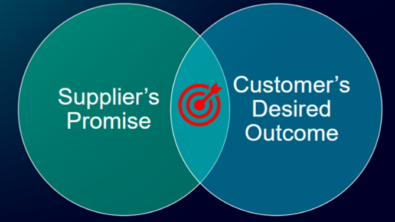Next-Step Automation Process Design: Why Today IS Tomorrow

Across the automation landscape, companies big and small are facing shorter lead times and more complex projects. Some have responded by declining work and keeping their processes simple, while others have embraced the need for greater agility and quality by upgrading their robotics programming platforms.
One of the biggest challenges in making this leap is clearly understanding the benefits of upgrading. That’s why we’ve broken down the benefits of next-gen robotic programming software to help understand the two sets of reasons—TODAY reasons and TOMORROW reasons—to make this change.
Today: Next-Step OLP for enhanced sales velocity
For many companies, the two biggest reasons for adopting Process Simulate today are to enhance your offline programming and to make a big impact on your company’s marketing and sales.
Next-Step OLP
Let’s start with enhancing your OLP. For starters, a next-gen robotics programming software like Siemens Digital Industries Software Tecnomatix Process Simulate allows you to program multiple brands of robots in a single simulation by using their native syntaxes while optimizing for cycle time and sequencing of operations. The software also provides levels of analysis that aren’t possible in previous generations of robot programming software, like advanced interference and reach analysis, and more sophisticated simulation analysis like checking whether a certain robot movement will put too much strain on a cable.
Benefits also include:
- Robot smart placement
- Robotic simulation editing
- Spot and arc welding
- Human and ergonomic factors simulation/analysis
- Static and dynamic collision detection
- 2D and 3D sections
- 3D measurements
- Sequencing of operations
- Assembly and robotic path planning
Together, these features have already given a majority of automation companies more than enough reason to move to Process Simulate.
Stunning simulations for sales and marketing
Another significant benefit that companies are realizing from Process Simulate is the ability to wow customers with attractive, accurate simulations. Customers are increasingly requiring this kind of proof-of-concept to demonstrate a company’s ability to fulfill a certain project. But even in cases where it’s not required, forward-looking automation companies are standing out from their competitors by showing customers tangible results before the project has even begun. On a more basic level, this type of software will provide what you need to estimate cycle times and very quickly quote projects with incredible speed and accuracy.
Tomorrow: Customer demand for virtual commissioning
For many companies, the customer demand for virtual commissioning is already the new normal. This means that customers want to see PLC code that has been fully debugged and validated in a virtual, simulation-driven environment before having that code sent directly to their real-world hardware for commissioning. This results in fewer errors at the time of real commissioning and can save significant amounts of time in Factory Acceptance Testing.
Even for companies that don’t see demand for virtual commissioning on every project, the trend is clear. More and more customers will demand virtual commissioning as part of their projects, and automation companies need to build their ability to perform this service today to set themselves up for success tomorrow.
Shifting left to slash lead and commissioning times
It doesn’t happen overnight, but leading automation companies have already learned how to use virtual commissioning in Process Simulate to validate their robot programs and PLC control logic (think grippers, conveyors, clamps, etc.) in a single simulation. This approach virtually eliminates the need for tinkering at the moment of real-world commissioning. This is because virtual commissioning in Process Simulate allows them to debug and validate all of their PLC code and robot programs during the design and engineering phase of their projects instead of the commissioning phase. For companies that have matured in their use of this software, this means less time spent on design AND commissioning.
Today IS tomorrow
Even if an automation company isn’t positioned to fully deploy virtual commissioning tomorrow, there are already more than enough reasons to make the switch to Process Simulate today. The immediate benefits will be enhanced OLP and improved sales and marketing capacity. But this change will also provide a head-start on the growing customer demand for virtual commissioning, and the shrinking lead times and improved quality being enjoyed by competitors that have already begun validating their robot programs and PLC control logic in a single virtual environment.
Contact us to learn more about how your company can get significant ROI today and stay ahead of tomorrow’s competition using Process Simulate. Or be sure to check out our webinar on the benefits of Process Simulate.
Philip Glennie, Ph.D. is the Director of Marketing and Sales at Longterm Technology Services. Over his career, he has worked extensively in the world of enterprise software, including ERP, APS, and PLM solutions. He is dedicated to helping companies of all sizes take their next step forward in Industry 4.0.
Longterm Technology Services based in London, Ontario, Canada, is a Siemens-recognized Expert Partner with a specialization in NX for Design and Tecnomatix Process Simulate and over twenty years of deep experience helping companies supercharge their products and processes with Siemens Digital Industries Software.


